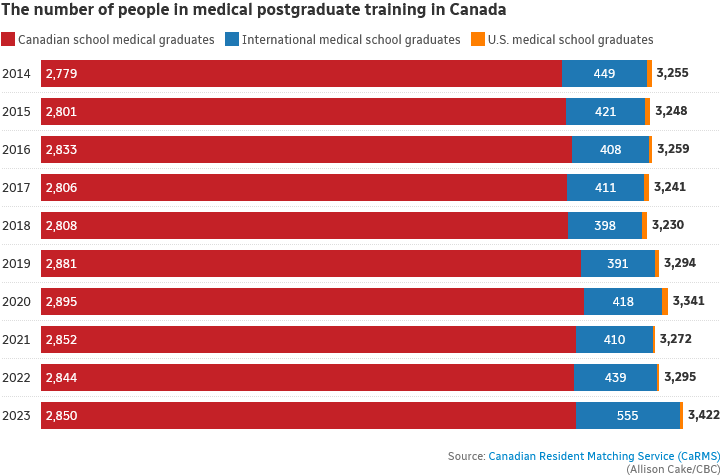If you feel like there’s no doctors in Canada, that’s because finding a physician here comes with the same odds as winning the lottery.

Don’t believe me? According to the lotto 649’s odds there’s roughly a 1 in 1,841 chance of getting 5/7 numbers on the Lotto 6/49 jackpot. But to win yourself a doctor in Canada? Well, according to the latest data, you have a meager 2.5 in 1000 odds. Which changes depending on where you’re located.
It’s clear that Canada’s population is exploding, but the amount of doctors available to the population hasn’t kept up. To put it into perspective, OurCare’s national survey on Healthcare reported at least 6.5 million Canadians don’t have access to a doctor.
Yes, and that’s in Canada – the place where healthcare was once touted as the best and most affordable in the world.
Now, If you’re wondering how Canada’s healthcare situation deteriorated so far, we’ve got the facts to shed on how our lovely Canadian Healthcare had its fall from grace, and why many feel like there’s no doctors in Canada to take care of them.
Our Tiny Doctor Quota Is Why There’s No Doctors in Canada
The scarcity of doctors in Canada starts at the amount of graduates who are admitted into residency. Residency is like on-the-job training for medical school graduates. But, it has since became a bottle neck for increasing doctors in Canada. Data from the Canada Resident Matching Service (CARMs) shows the amount of new medical residents has stayed stagnant while Canada’s population has boomed.
These limitations are intentionally imposed… by the Canadian government! How and why?, You may ask, well Canada uses a quota system that limits the amount of students allowed to enroll in the country’s medical schools. It also limits the amount of residency spots they offer. With around a meager 3000 spots per year as you can see in the graph below.

While the quota system was created to ensure that the Canadian public health system can afford the number of doctors, it’s now increasingly scrutinized by the public and politicians for not keeping pace with Canadian demographic shifts. Furthermore, the government also puts quota allocations on the types of doctors that can be trained in Canada. For example, 10 Oncologist, 24 Cardiologists etc.
However, in 2024, as you’ve likely seen if you had to go the emergency room or get some kind of surgery, the outdated quota system is manifesting in ways which are not pretty. Not only is not finding a primary care giver a common symptom, if you have cancer you’re going to be on lengthy waiting-list often becoming too long of a wait for some cancer cases.
If you though revamping this system would fix it quickly, you might be disappointed. On average it takes a decade to train a skilled medical professional in Canada, ensuring a decade length backlog in the event we do see changes. Sadly, it’s clear the doctor situation is dicey in Canada, and it’s part of the reason why we’ve made it a priority to warn newcomers about their healthcare prospects here if they’re looking to migrate.
Salary Caps and the Allure of Working in the USA
As we’ve explored, healthcare in Canada is heavily regulated from the positions available to the salary offered as its the government that pays for it. In the face of salary caps and an exponential rise in the cost of living, Canadian doctors are often compelled to take there skills down to the USA where they can have a shot at an unlimited earning potential, lower cost of business, and a healthier work environment for them and their family.
And as you’ve noticed, it’s not just the salary affecting Canadian healthcare workers. The working conditions, amount of patients, and pay can be set by the Canadian professional in the USA, creating a healthier environment for Canadian medical professionals and increasing their likelihood of moving south to practice.
And with steady reports of burnout, depression, and anxiety amongst Canadian caregivers as we come into to post-pandemic world, many are considering a change in scenery.
The US is a magnetic option for many Canadian-trained doctors with it’s competitive compensation packages, advanced research opportunities, and a larger market opportunity to take part in.

Making it a prime reason why many Canadians have moved south, exacerbating the shortage at home, and leaving you wondering why there’s no doctors in Canada.
Canadian Doctors Have Patient Caps
In certain Canadian provinces like British Columbia, there exists a concept of patient caps. Patient caps set a limit on the number of patients a doctor can see per day. For example, in BC, a doctor can see up to 65 patients a day, and after that, they will not get paid.

While, this is an attempt to limit the cost burden to the government, it further strains the healthcare system as our population expands.
Additionally, for doctors running their own practice, these caps put a strain on their finances as well as they have rising overhead and salaries to pay in the face of Canada’s rising cost of living.
These caps are put in place to ensure quality care but can result in longer wait times for patients and increased pressure on the available healthcare providers.
Some say switching to salary based model could help, but in the realm of Canadian healthcare, the status quo will likely remain the same and continue increasing the sentiment of feeling like there’s no doctors in Canada.
Burnout Culture and High Stress Environments
Data from the Canadian Medical Association CMA shows that reports of burn out and suicidal ideation among Canada’s doctors has increased drastically post-pandemic. What’s behind this rise? We looked deeper into that report, and found that the main drivers behind this change are:
Burnout Culture and High Stress
At the heart of the doctor shortage is a profound sense of burnout, exacerbated in the wake of the pandemic. Canadian doctors have been navigating not just a public health crisis, but a personal one as well. Post-pandemic burnout has surged due to worsening working conditions. The relentless demand and pressure have led to significant emotional and physical exhaustion. This situation is further aggravated by family obligations and low professional fulfillment. These elements combined create a toxic environment that drives many physicians to leave the profession or reduce their working hours.
Worsening Working Conditions
The post-pandemic era has witnessed a decline in the quality of care doctors can provide to each patient. This deterioration is not only due to increased workloads but also because of the heightened cost of living and the financial stress experienced by patients. These factors have led to a heightened sense of uncertainty about the future of healthcare, both for patients and healthcare providers.
Social Isolation and Demanding Schedules
Another facet of this crisis is the social isolation experienced by doctors. With an exponential rise in population, doctors are spending more time in their offices and less with their families. This imbalance contributes to a decreased quality of life and a feeling of isolation, as the demands of their profession leave little room for personal time or social interactions.
Limited Mental Health Support and Stigma
Mental health support for doctors, especially those in rural areas, is woefully inadequate. Many avoid seeking help due to privacy concerns and the stigma attached to healthcare professionals admitting their struggles. Moreover, being intimately familiar with the system, they are acutely aware of the lengthy delays in receiving care, which further dissuades them from seeking help.
Wrapping Up – Understanding Your Options For Healthcare in Canada
The healthcare sector in Canada is facing a crisis causing medical professionals drop out of the healthcare game or practice it elsewhere. It’s clear the factors contributing to this include long working hours, poor compensation, high patient volumes, and the stress of maintaining a work-life balance.
The demanding work culture in healthcare, compounded by the emotional and physical toll of the job, leads to high rates of turnover, further reducing the number of active practitioners here.
Sadly the doctor shortage in Canada isn’t just a blip on the radar; it’s a deep-seated issue that stems from systemic flaws within our healthcare system. What we need is not just a few quick fixes, but a holistic strategy that looks after the whole well-being of our medical professionals – their physical, emotional, and mental health.
However, due to it’s deep seated disarray, it could be strategic to settle down roots in a country where healthcare is stronger, cheaper, and faster. If you’re looking for a place where healthcare isn’t an issue, we have just the right quiz for you to take. It’s called the Leaving Canada Quiz and it will find you a country based on your preferences. Check it out below!
Looking to leave Canada?
Take the country quiz to see where you belong!

Leave a Reply